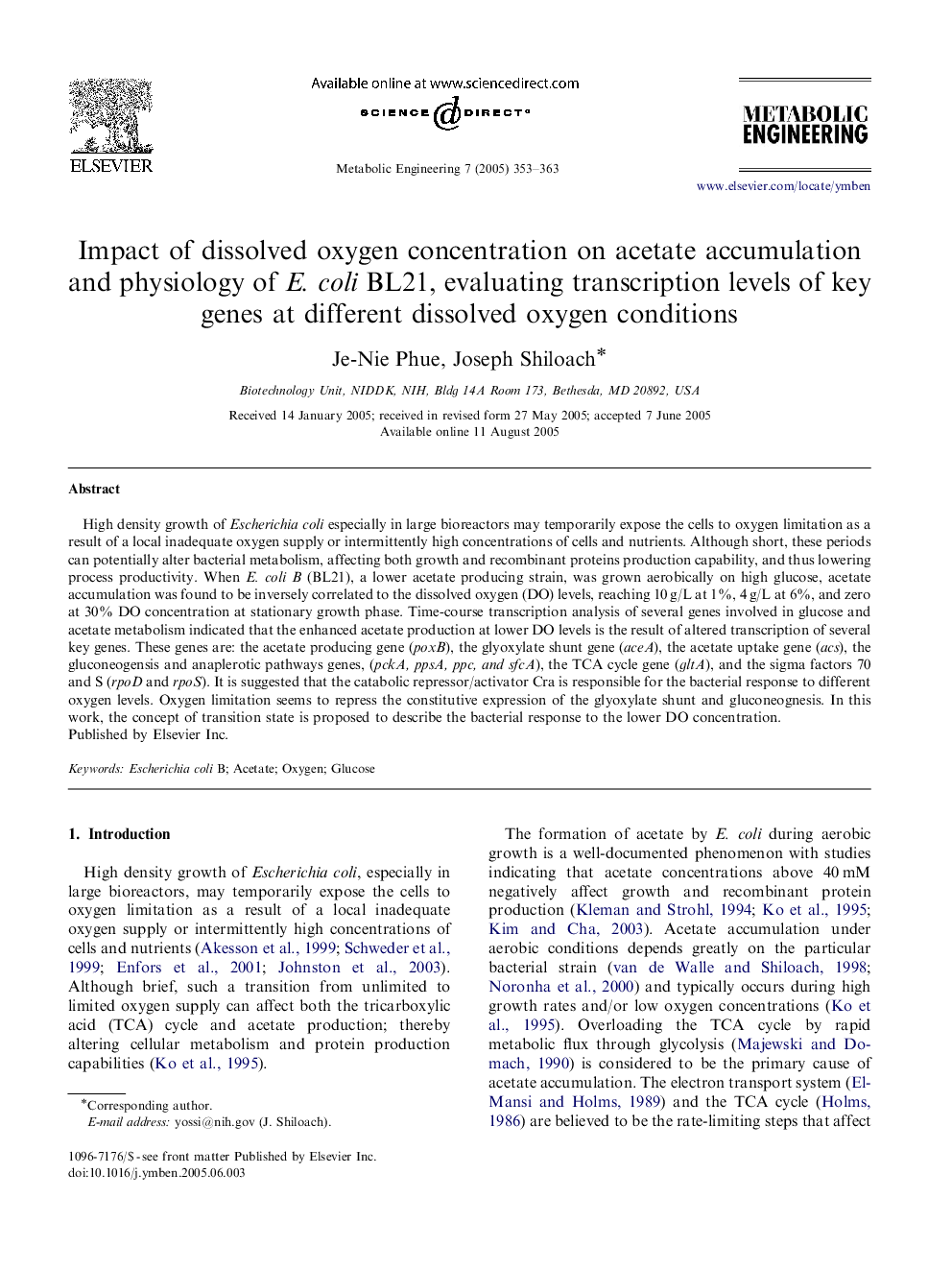| Article ID | Journal | Published Year | Pages | File Type |
|---|---|---|---|---|
| 9607648 | Metabolic Engineering | 2005 | 11 Pages |
Abstract
High density growth of Escherichia coli especially in large bioreactors may temporarily expose the cells to oxygen limitation as a result of a local inadequate oxygen supply or intermittently high concentrations of cells and nutrients. Although short, these periods can potentially alter bacterial metabolism, affecting both growth and recombinant proteins production capability, and thus lowering process productivity. When E. coli B (BL21), a lower acetate producing strain, was grown aerobically on high glucose, acetate accumulation was found to be inversely correlated to the dissolved oxygen (DO) levels, reaching 10Â g/L at 1%, 4Â g/L at 6%, and zero at 30% DO concentration at stationary growth phase. Time-course transcription analysis of several genes involved in glucose and acetate metabolism indicated that the enhanced acetate production at lower DO levels is the result of altered transcription of several key genes. These genes are: the acetate producing gene (poxB), the glyoxylate shunt gene (aceA), the acetate uptake gene (acs), the gluconeogensis and anaplerotic pathways genes, (pckA, ppsA, ppc, and sfcA), the TCA cycle gene (gltA), and the sigma factors 70 and S (rpoD and rpoS). It is suggested that the catabolic repressor/activator Cra is responsible for the bacterial response to different oxygen levels. Oxygen limitation seems to repress the constitutive expression of the glyoxylate shunt and gluconeognesis. In this work, the concept of transition state is proposed to describe the bacterial response to the lower DO concentration.
Related Topics
Physical Sciences and Engineering
Chemical Engineering
Bioengineering
Authors
Je-Nie Phue, Joseph Shiloach,
